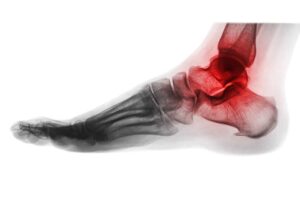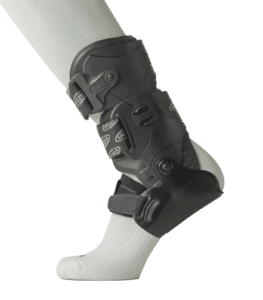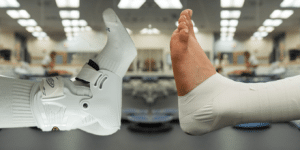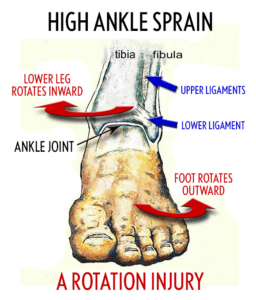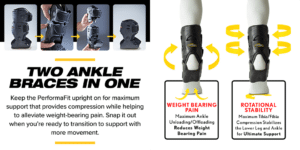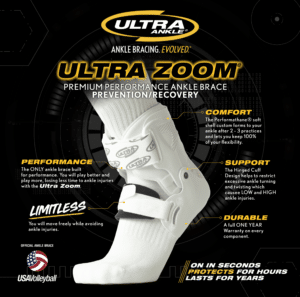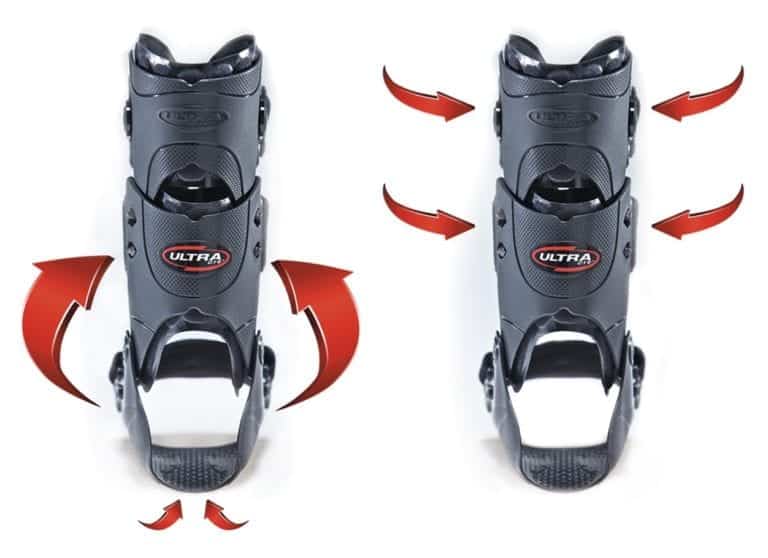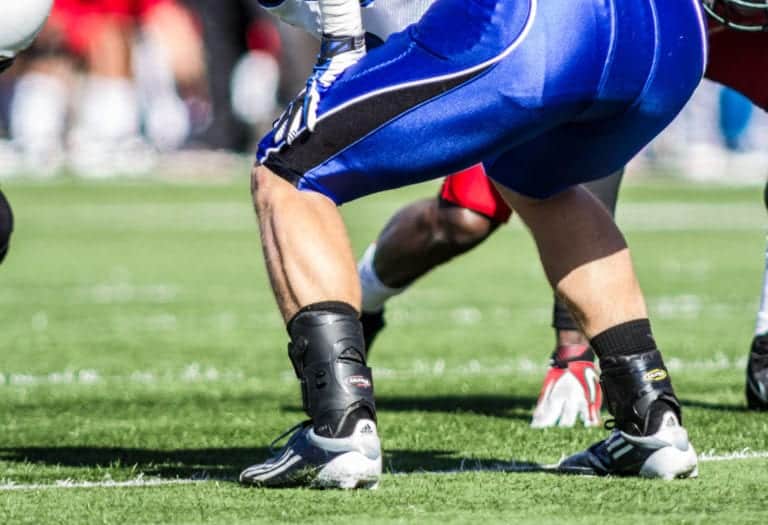Ankle injuries can be debilitating, impacting your ability to walk, run, and perform daily activities. Whether it’s a sudden acute injury, a chronic condition like osteoarthritis, or the often challenging high (syndesmotic) ankle injury, finding effective treatment and support is crucial for a swift recovery. This is where Ultra AnkleⓇ steps in with the Ultra CTSⓇ Ankle Brace, a groundbreaking solution designed to provide comprehensive ankle injury management.
Ultra Ankle, a leader in innovative bracing technology, has engineered the Ultra CTS (Custom Treatment System) to address the specific needs of individuals suffering from various ankle conditions. Unlike traditional ankle braces, the Ultra CTS offers customizable support and stabilization, helping users reduce weight-bearing pain and regain their mobility quickly and safely. Moreover, the Ultra CTS is FDA registered as a Class 1 medical device, ensuring it meets stringent safety and efficacy standards. In this blog post, we’ll delve into the unique features and benefits of the Ultra CTS Ankle Brace, explaining why it’s an essential tool for anyone dealing with ankle injuries.
Understanding the Ultra CTS Ankle Brace
The Ultra CTS Ankle Brace is a one-of-a-kind medical device designed specifically to treat a variety of ankle conditions. Its innovative design and functionality make it an ideal choice for those suffering from:
- Acute Ankle Injuries
- High (Syndesmotic) Ankle Injuries
- Osteoarthritis
What sets the Ultra CTS apart is its ability to adjust the level of ankle support and unloading, which helps reduce weight-bearing pain and enables a faster return to activity. This flexibility makes it a versatile tool for managing traumatic ankle conditions in one comprehensive brace.
The Ultra CTS offers two key features crucial for treating acute ankle injuries, high ankle injuries, and ankle osteoarthritis:
- Reducing Weight-Bearing Pain
- Maximum Lower Leg and Ankle Stabilization and Support
In the following sections, we will explore how the Ultra CTS achieves these benefits, thanks to its advanced design elements and materials.
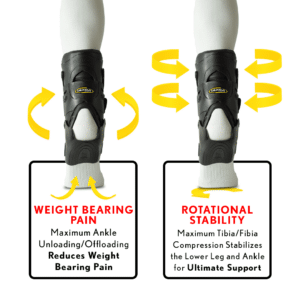
Key Features of the Ultra CTS Ankle Brace
Reducing Weight-Bearing Pain
One of the standout features of the Ultra CTS Ankle Brace is its ability to unload the ankle, reducing weight-bearing pain. Unlike most other ankle braces, which are not designed to structurally unload the ankle, the Ultra CTS incorporates a unique semi-rigid foot section and an upper cuff section which forms a custom fit to the lower leg. This structurally sound design absorbs impact and energy from activities like standing, walking, or running, which would normally be transferred to the ankle, causing joint irritation and pain. This process minimizes trauma and pain in the ankle, leading to a quicker return to activity or competition. By reducing the impact on the ankle, the Ultra CTS not only alleviates pain but also promotes faster and more efficient recovery.
Stabilizing the Ankle and Lower Leg
The Ultra CTS Ankle Brace also excels in providing maximum stabilization for the ankle and lower leg. It features a dual hinged-cuff design that is taller than most other braces, effectively compressing and stabilizing the tibia and fibula. This design is particularly beneficial for managing high ankle injuries.
The upper cuff section of the brace is made from Performathane®, a flexible soft-shell material that securely encircles the lower leg and ankle. Performathane® uses body heat to form a custom fit to the wearer’s anatomy, resulting in enhanced comfort and support. This material’s adaptability ensures that the brace conforms perfectly to each individual’s lower leg and ankle, providing tailored stabilization.
While most ankle braces primarily restrict ankle turning or inversion (which causes low ankle injuries), the Ultra CTS goes a step further by also limiting excessive ankle turning (inversion) and twisting (rotation). Ankle rotation causes high ankle injuries, which are more severe than low ankle injuries and take longer to heal. This comprehensive restriction helps prevent both low and high ankle injuries, offering superior protection and support.
Performathane® Material for a Custom Fit
The Ultra CTS utilizes Performathane®, a proprietary flexible soft-shell material that uses body heat to mold to the wearer’s foot and ankle. This ensures a custom fit, enhancing both comfort and support. Performathane® forms a secure, personalized fit around the lower leg and ankle, offering tailored stabilization that adapts to the unique shape of each user’s anatomy.
Adaptability and Transition
One of the most impressive aspects of the Ultra CTS Ankle Brace is its adaptability, which allows users to transition from maximum support to enhanced mobility as their condition improves. This feature ensures that the Ultra CTS can be used throughout different stages of recovery, offering both robust support and mobility when needed.
Detachable PerformaFit® Upper Cuff Section
The detachable PerformaFit® upper cuff section is a standout feature of the Ultra CTS, enhancing its versatility. This cuff, made from the proprietary Performathane® material, provides maximum stabilization and a custom fit during the early stages of recovery. Once the wearer no longer requires such extensive support, the upper cuff can be easily removed, transforming the brace to allow greater ankle movement while still offering necessary support.
This adaptability is particularly beneficial for athletes and active individuals who need to maintain a balance between support and mobility. By providing the option to adjust the level of support, the Ultra CTS ensures that users can continue their recovery without the need to switch to a different brace.
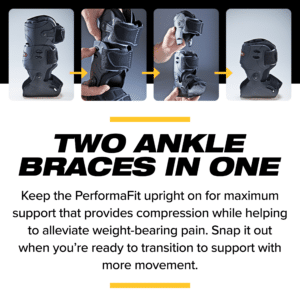
Effectiveness and Expert Support
The Ultra CTS Ankle Brace stands out not only for its innovative design but also for its proven effectiveness in treating ankle trauma and facilitating a swift return to an active lifestyle. Its comprehensive features make it an invaluable tool for managing various ankle conditions, from acute injuries to chronic issues like osteoarthritis.
Why the Ultra CTS is Unique and Effective
The Ultra CTS Ankle Brace is uniquely effective due to its combination of customizable support, advanced materials, and thoughtful design elements.
Additionally, the Ultra CTS is FDA registered as a Class 1 medical device, providing users with confidence in its safety and efficacy. This registration underscores Ultra Ankle’s commitment to delivering high-quality, reliable medical devices that meet rigorous standards.
Contact Information for Expert Support
At Ultra Ankle, we understand that every ankle injury is unique, and having access to expert advice can significantly enhance the recovery process. Our team of Certified Athletic Trainers is available to answer any questions you may have about the Ultra CTS Ankle Brace. These professionals are experts in ankle injuries and bracing, and they are dedicated to helping you find the best solutions for your specific needs.
If you have any questions or need personalized guidance, please do not hesitate to reach out to our Certified Athletic Trainers. They can provide detailed information on how to use the Ultra CTS, advice on transitioning between support levels, and tips for maximizing your recovery.
